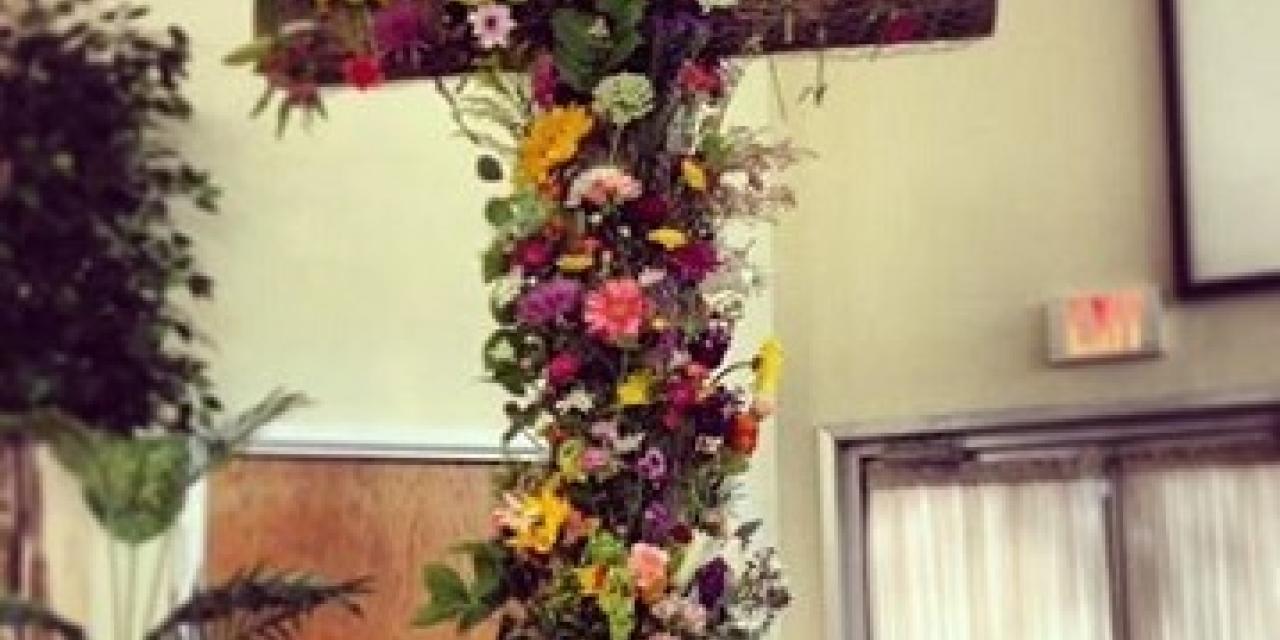It’s a familiar story, a story that many older churches share. The congregation now known as Lombard Christian Reformed Church (CRC) was founded in 1912 as the first CRC in Chicago to worship only in English, not Dutch. It became known for progressive music and community outreach. Over the generations, the church grew and moved, and grew again, till it had to offer two identical Sunday morning worship services—because even the chairs in the aisle were full.
As praise music and seeker-sensitive models swept through North American churches, Lombard CRC’s two Sunday morning services developed very distinct worship styles. Yet attendance declined. Members who remained worked harder. More people left. Lombard CRC no longer felt like one congregation united in worship and outreach.
This is the lifecycle stage that marks the beginning of the end for many congregations. But Lombard found a way to bring about worship renewal. Perhaps your church can use ideas from their example of moving slowly and together as they worship more actively in response to the Holy Spirit’s leading.
Slowly renewing, not blending
Pastor John Huizinga says, “When I came here in 2009, there was a very traditional pastor-led service, with choirs and hymnals, and a contemporary service, with twenty minutes of singing, a message, a prayer and then we went home. Because of vacations, they had begun to combine each summer, and people really liked it.
“When I started in ministry, the norm was for CRC people to attend twice a Sunday. Now, it’s twice a month. With winter travel and long weekends away, worship attendance was sparse at both our traditional and contemporary services.”
So early in 2012, the year of Lombard CRC’s centennial, Huizinga started an important conversation with elders. They in turn had conversations one-on-one and in small groups within the congregation, asking people, “What do you see? What would help us as a church to reach out more to our community?”
Huizinga says that elders gradually realized that the vast difference between services worked against unity. The energy poured into two sets of morning volunteers for nursery, music and other roles could be better spent. They decided to move to a single Sunday morning service year-round—starting in six months.
“The summer services had been blended in a simplistic way, basically using the most familiar hymns and contemporary songs. We said, ‘Let’s put everything on the table and work toward something brand new, rather than cobble together a service from the traditional and contemporary categories.’ People had lots of assumptions and fears, ranging from, ‘We’ll never use the organ again’ to, ‘We won’t have a worship team,’” he recalls.
“All on and all in”
They didn’t know what form their new worship service would take, but the congregation agreed to start with scripture and explore renewal together. In January 2013, fourteen members attended the annual Calvin Symposium on Worship, which draws Christians from around the world to Grand Rapids, Michigan.
“Our leadership team modeled the task of worship renewal by studying scripture and together settling on guiding biblical principles of worship,” Huizinga says. In spring 2013, they dedicated four services to these principles:
- there is an order to worship
- the Word is central
- worship is not just on Sunday
- the character of worship is love
The series began while the congregation still had two services and ended after it launched the new 9:45 a.m. service.
After receiving a worship grant from the Calvin Institute of Christian Worship, the congregation commissioned a worship renewal team, and small groups studied Wise Church: Exploring Faith and Worship with Christians around the World.
“Our sermon series and small group studies led to a strong biblical emphasis about giving preference to others in worship and learning a new language to talk about worship,” Huizinga says. People practiced redirecting their worship conversations away from what they liked or disliked—or judged as right and wrong—toward what helped open others to the Spirit’s leading. Worship conversations began to focus on glorifying and experiencing the Triune God together.
They started using the phrase “all on and all in” to describe each person’s role in worship. “Every Sunday some of us are assigned to greet, lead singing or read scripture. But each of us is called to be hospitable, participate in worship and draw near to God. We’re ‘all on the clock,’ offering to the Lord what we’re called and equipped to do. And we’re ‘all in this 24/7,’ from Sunday morning throughout the week,” Huizinga says. One new “all on and all in” practice is that hospitality volunteers now pray together before taking up their duties each Sunday.
Worship is a verb
Before Lombard’s renewal process, many members would have equated worship with music or talked about worship as a style. Sermons, studies, conversations and more shifted their understanding to worship as a verb or action.
Worshipers received many opportunities to participate. They could attend a readers’ workshop on new ways to read, present and recite scripture. They could dress the sanctuary for liturgical seasons, celebrate the Lord’s Supper in different ways, sing songs spanning a variety of musical styles and time periods, share brief testimonies and experience times of silence in worship.
Worshipers experienced these new actions and elements not as a random smorgasbord but as a unified dialogue between God and gathered people. “We’ve really worked on crafting a service in which all the elements flow together. After a scripture passage, our worship director might say, ‘We were just reminded of God’s faithfulness, so let’s sing about how faithful God is.’
“We’ve built in more response opportunities to glorify and experience God. We want worshipers to find the freedom to name the mystery in life. Some worship elements now create space for us to ask questions, maybe out loud, mostly within ourselves—or even live with a question for a while as we come to the cross of Christ and the grace of forgiveness,” Huizinga says.
Lombard tries never to blindside worshipers with new things. Before the congregation sings a new song, they’ll likely have heard it on previous Sundays, perhaps as a prelude solo or by a choir during the offering time. Huizinga writes a quarterly "Roadmap to Renewal" to cue people to upcoming liturgical, lectionary or worship elements and report feedback on recent changes. Many members opt to receive on Friday the weekly “Prepare Your Heart” email with worship notes, scripture and song selections.
Journeying together
Worship renewal journeys work best when congregations know there’s a map and know they have a say in using the map. Lombard’s “maps” include seeing the Holy Spirit as their guide, agreeing on an accountability structure and keeping the congregation informed in person, in print and through social media.
“We put a lot of thought and energy into communication. We hold to our promise that this is a journey, so we hold our worship decisions loosely. We take time in all our meetings to pray for the Holy Spirit’s guidance. We know that the Holy Spirit works in all believers, so each must be valued on their own faith journey in what they say and do,” Huizinga says.
Lombard communications tell worshipers what, why and when they’ll try something new—as well as where they can give feedback, such as at dessert discussions or lunch-and-learn events. People expect that new practices may feel artificial or uncomfortable and accept that it’s okay to say so. Some worshipers feel like one body when everyone holds hands for prayer or the parting blessing. Others aren’t sure yet about giving up their personal space.
People entering a recent Good Friday service each received an ornamental nail, which they were invited to leave at a cross on the stage as they left worship. On Easter morning, the nails were gone and the cross was inside a wire grid. Worshipers received fresh carnations to put on the cross as a sign of new life.
A few years ago, worship changes at Lombard evoked comments like “Those drums distract me” or “Those old hymn lyrics don’t speak to me” or “Only the elders should offer prayer.”
There’s a different spirit now. “One older member shared how a particular service featured music he didn’t care for, but he still thanked God for that service, because those leading worship had shared their stories of God’s leading and healing in the lives. This older man took joy in their restoration,” Huizinga says.
Links
- Wise Church: Exploring Faith and Worship with Christians around the World
- Video and handout: Worship in 1 Corinthians: Paul’s Take on the Corinthian Worship Wars
- John Huizinga on Worship Change Accountability
LEARN MORE
Don’t miss this story’s two companion conversations:
- John Huizinga talks about worship change accountability in Lombard CRC’s process of combining two services into one.
- In contrast to Lombard CRC, Emmanuel Reformed Church in Paramount, California, didn’t combine services. It added a service. C. J. Newendorp explains how Emmanuel’s new Sunday Night service renewed the whole church.
Listen to John Huizinga’s sermons on biblical worship. Read about Lombard CRC’s 2012 centennial and 2013 Vital Worship grant project. Lombard CRC uses Planning Center Online to schedule volunteers and keep everyone informed while crafting a worship service in which all elements flow together.
Lombard CRC members who attended the 2013 Calvin Symposium on Worship came home convicted by Philemon 9: “I appeal to you on the basis of love…” and 1 Corinthians, as explained by Dr. Kenneth E. Bailey. They recommend going with several peers to the next Calvin Symposium on Worship to discuss and try what you learn.
Gather a group to read and discuss a book:
- From Memory to Imagination: Reforming the Church’s Music by C. Randall Bradley
- Slow Church: Cultivating Community in the Patient Way of Jesus by C. Christopher Smith and John Pattison
- Wise Church: Exploring Faith and Worship with Christians around the World by Emily Brink and Paul Detterman
- Worship Is a Verb: Celebrating God’s Mighty Deeds of Salvation by Robert E. Webber
START A DISCUSSION
Feel free to print and distribute these stories at your staff, board or worship meeting. These questions will help people think about how to begin a worship renewal process.
- What worship practices do you find most nourishing in your congregation?
- What signs do you see that what people do in worship is positively shaping members’ faith journeys, your congregational life or community outreach?
- Sit in silence with others while you ask God which worship-and-life disconnects your church doesn’t talk about. Share your insights. Brainstorm how you could begin a congregation-wide conversation about what people see and what you could do in worship to help people engage with your community.

